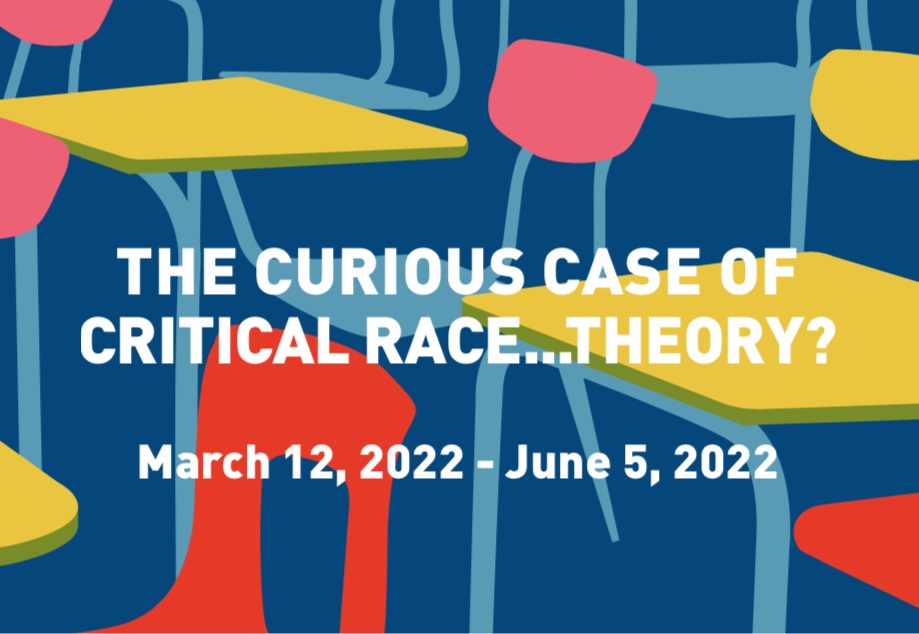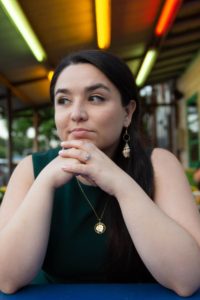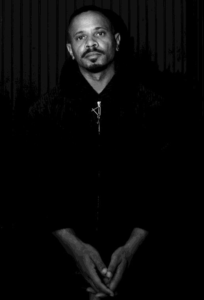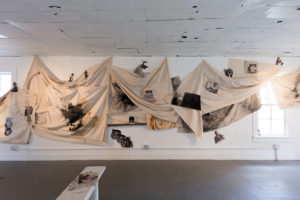The Curious Case of Critical Race
“We are a society that has been structured from top to bottom by race. You don’t get beyond that by deciding not to talk about it anymore. It will always come back; it will always reassert itself over and over again.” –Kimberlé Williams Crenshaw
Created in the 1970’s by legal scholars, Critical Race Theory (CRT) was developed as an academic concept to help understand the structural and racial disparities that endure in our society, engendering differential experiences of law and policy across lines of difference. The idea was to shift our thought processes to a more systemic evaluation of racism, as opposed to the more prevalent notion that racism manifests through the thoughts and deeds of individuals. The theory is not a specific curriculum, training, or agenda. However, today the very term itself has become politically charged, creating controversy around the country.
This is especially true concerning how young people are taught social justice and equity in America. Last year, in many states including Texas, lawmakers have passed legislation restricting how teachers can discuss current events, encourage civic engagement, and teach about America’s history of racism. By the end of 2021 Texas Senate Bill 3 was passed, enforcing how social studies is taught in schools K-12, prohibiting concepts of discussing race and racism.
The added disruption that sprang from America’s most recent reckoning with racism and social injustice has called Round 53 to respond to the current conversations around CRT. Round participating artists Leah Gipson, David-Jeremiah, Adam W. McKinney, Tammie Rubin, Bradley Ward, and ROUX, a collective comprised of Rabéa Ballin, Ann Johnson, Delita Martin, and Lovie Olivia were encouraged to explore more critical frameworks as well as how the term is currently leveraged as a catch-all for personal assumptions and/or systems of belief but also respond to the more generalized lived realities that inform the theory.
The University of Houston Downtown Critical Race Studies Center, The Houston Young Lawyers Association (HYLA), and Kindred Spirits Design Co. have also collaborated to transform one of the art houses into an education house. The goal is to dissect, interpret and better understand the theory. The space will also be used to conduct workshops, and gatherings throughout the duration of the Round.
Americans are socialized to mitigate problems with action. However, when the problem is structural inequality and institutionalized racism, somehow controversy ensues. We intend to clear up the misnomers of the theory; to not allow ourselves to be impeded from thinking critically about race, racism, and power and their links to the disparities within our social systems. As we embark upon Project Row Houses’ 30th anniversary, Round 53: The Curious Case of Critical Race…Theory? Continues the introspective work of previous Rounds by inviting examination of our own ideologies through the works of artists whose themes of and concerns with the African diaspora/ Blackness/ the Black experience have transcended generations.
About the Artists
2517 – ROUX (Rabéa Ballin, Ann Johnson, Delita Martin, and Lovie Olivia)
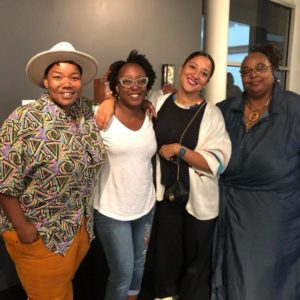
Bio: ROUX [ROO} A mixture of flour and fat that, after being slowly cooked over low heat, is used to thicken mixtures such as soups and sauces. This dark nutty-flavored base is indispensable for specialties like GUMBO, ETOUFFEE, and BECHAMEL.
In 2011, the artist collective ROUX was formed as part of the inaugural exhibition series PrintHouston. ROUX contributes to the discourse of contemporary printmaking by using traditional and experimental methods while highlighting the diverse art practices of Rabéa Ballin, Ann Johnson, Delita Martin, and Lovie Olivia. These four artists’ works navigate between styles of the past and the proposed future and addresses experiences unique to Women of Color residing in the American South. These four artists not only embrace and challenge drawing conventions in medium, surface and concept but apply unusual approaches to the process and ingredients of printmaking. Identifying as installation, video, mixed media artists, sculptors and painters as well, they make the common voyage, once a year, to the arena of Printmaking. The four are intrinsically invested in a dialogue with print, pattern and mark-making; both two dimensionally, as well as, taking these marks of line, erasure / transparency, memory and process, off the page to flirt with a three-dimensional environment. From digital plaster fresco to traditional works on paper to more organic approaches like printing on feathers, glass and fabrics, the works summon an ingrained dialogue with the historical and formerly domestic spaces.
Sensitive About Our Blues
ROUX joins forces on the heels of their 10th anniversary as a four-woman artist collective. Their work navigates style and materiality while comingling medium and method with organic improvisation. Sensitive About Our Blues aims to enrich engagement by way of an immersive and transformative environment through various approaches to printmaking, painting, design, and sculpture.
ROUX critically, radically, and honestly articulates experiences unique to Black Women, Women of Color, and Queer Women residing in the American South. Sensitive About Our Blues simultaneously responds to the attempted erasure of those contributions and experiences as well as the ongoing threat to Critical Race Theory, Intersectionality, and other Anti-Oppression concepts. ROUX invites the viewer to remember while reimagining and to stay with or travel through this mesmeric tapestry of ideas.
ROUX utilizes this domestic interior to recognize both the Southern and African roots of the structure itself, as well as the significant 25+ year art history of Project Row Houses.
“They want our rhythm but not our blues” -anonymous
2515 – Bradley Ward
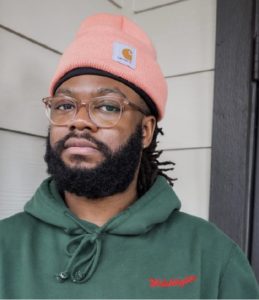
Bio: Based in Houston, TX, Bradley Ward is a Texas Southern University alum and Pratt Institute MFA recipient. Ward explores the modalities and poly-characterization of survival within the Black experience through a multitude of media. Emphasizing domains in which rhythm has matriculated through the Black body, often in labor, there are also spaces for the extraordinary in the confluence of Black leisure. Using sports and performance to reinforce this median within Black life, Ward is currently focusing on the magic of Black harmony and resonance, creating context for both, by way of portraiture and overlapping figuration respectively.
Blacker Spectabula Rasa
Working to widen the language by which we define ourselves is an interactive nonlinear compendium showcasing the reverberations of the Black ripple effect on Americana in the 21st century. Blacker Spectabula Rasa emphasizes the pervasive revolutions by the diaspora by highlighting cultural institutions and icons that granted us agency and freedom. This installation ties moments that have become global phenomenon’s back to the earliest and domestic responses to a repressive society and helps contextualize Black America’s sociology while preserving our own in an effort to not be misprinted, misinterpreted or omitted. Ward presents an informal public library, and works of figuration and design detailing pop culture, which is Black culture.
2513 – Tammie Rubin
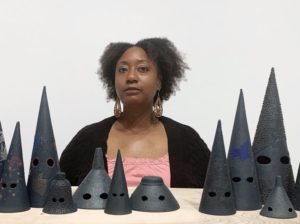
Bio: Tammie Rubin (b. Chicago, Il) is an artist whose sculptural practice considers the intrinsic power of objects as signifiers, wishful contraptions, and mythic relics, while investigating the tension between the readymade and the handcrafted. Using intricate motifs, Rubin delves into themes involving ritual, domestic and liturgical objects, mapping, migration, magical thinking, identity, and sensual desire. Her sculptures open up dream-like spaces of unexpected associations and dislocations. Rubin received a BFA in both Ceramics and Art History from the University of Illinois, Urbana-Champaign, and an MFA in Ceramics at the University of Washington in Seattle. Rubin has exhibited widely, selections include the Hessel Museum of Art at Bard College, Annandale-on-Hudson, NY., The Houston Center for Contemporary Craft, TX., George Washington Carver Museum, Austin, TX., Evansville Museum of Arts, History, & Science, IN., Rockford Art Museum, IL., Mulvane Art Museum, KS., Women & Their Work Gallery, Austin, TX., Charak Gallery at Craft Alliance, St. Louis, MO., and the Sarah M. Hurt Gallery at the Indianapolis Art Center, Indianapolis, IN. She is represented by Galleri Urbane, Dallas, TX., & Rivalry Projects, Buffalo, NY.
Rubin’s artwork has received reviews in online and print publications such as Artforum, Art in America, Glasstire, Austin American- Statesman, Austin Chronicle, Sightlines, fields, Conflict of Interest, Arts and Culture Texas, Ceramics: Art & Perception, and Ceramics Monthly. She founded Black Mountain Project along with fellow Austin-based artists Adrian Aguilera and Betelhem Makonnen, and she is a member of ICOSA Collective, a non-profit cooperative gallery. Born and raised in Chicago, Rubin currently lives in Austin, Texas where she is an Associate Professor of Ceramics & Sculpture at St. Edward’s University.
HARMONY COMFORT CONVENIENCE
Rubin’s HARMONY COMFORT CONVENIENCE is an immersive mixed-media environment that pairs the artist’s fractured narratives of her family’s quest as American citizens for full autonomous lives despite the countries embedded systematic racism. This structure of inequality that is continually perpetuated through US laws is a framework for understanding the genesis of Derrick Bell’s Critical Race Theory (CRT). HARMONY references the attorney’s most noted civil rights case. In 1964, sisters Winson and Dovie Hudson both residents of Harmony Mississippi, filed a lawsuit for the desegregation of Leake County schools. While the lawsuit was decided in favor of the plaintiffs, the judge’s ruling ensured many obstacles to the process of desegregation. Such experiences led the legal scholar to question the practical impact of such cases to seek equal civil rights and justice. COMFORT and CONVENIENCE cite Martin Luther King, Jr.’s 1963 book Strength to Love, he writes “The ultimate measure of a man is not where he stands in moments of comfort and convenience, but where he stands at times of challenge and controversy.”
The installation is comprised of sculptures, ready-mades, text, and found objects that delve into the artist’s familial relationship with their Mississippian roots. Rubin’s sculptures investigate the tensions between the readymade and the handcrafted object. She collects mass-produced consumer objects that strike her as iconic of the everyday, such as industrial fixtures, domestic objects, plastic products, packaging, toys, and flora. In these objects, many of which are cheap, trivial, and disposable, she finds unexpected beauties and meanings. Using intricate motifs, she examines widely diverse themes relating to consumer culture such as magical thinking, animism, ritual, domestic and liturgical objects, artificial nature, and sensory desire. Relying on informed intuition and process, she transforms the familiar and trivial into the mythic and fantastical. Separating objects from their original function, she contemplates ideas of authenticity and the inherited symbolism in form. Rubin is fascinated with how objects divorced from function, allow the mind to wander freely over a range of associations, to skip magically between different categories of experience, opening up dream-like space of unexpected associations and dislocations.
2511 – Adam W. McKinney, DNAWORKS
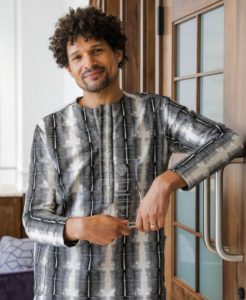
Adam W. Mckinney Bio: Adam W. McKinney is a former member of Alvin Ailey American Dance Theater, Béjart Ballet Lausanne, Alonzo King LINES Ballet, Cedar Lake Contemporary Ballet, and Milwaukee Ballet Company. He has led dance work with diverse populations across the U.S. and in Benin, Canada, England, Ghana, Hungary, Indonesia, Israel, Italy, Mexico, Palestine, Poland, Serbia, Spain, and South Africa. He served as a U.S. Embassy Culture Connect Envoy to South Africa through the U.S. State Department. Other awards of note include a Mid-America Arts Alliance Interchange grant for Fort Worth Lynching Tour: Honoring the Memory of Mr. Fred Rouse, an augmented reality bike tour and dance performance around Fort Worth to remember a history of lynching; the NYU President’s Service Award for dance work with populations who struggle with heroin addiction; grants from the U.S. Embassy in Budapest and The Trust for Mutual Understanding to co-lead work with Roma youth in Hungary; a Jerome Foundation grant for Emerging Choreographers; and a U.S. Embassy in Accra grant to co-lead a video oral history project with a Jewish community in Sefwi Wiawso, Ghana. He was a School of American Ballet’s National Visiting Teaching Fellow, an opportunity to engage in important conversations around diversity and inclusion in classical ballet. Named one of the most influential African Americans in Milwaukee, WI by St. Vincent DePaul, McKinney is the Co-Director of DNAWORKS, an arts and service organization committed to healing through the arts and dialogue. He serves as President for Tarrant County Coalition for Peace and Justice, a Fort Worth-based social justice organization. He holds a BFA in Dance Performance with high honors from Butler University and an MA in Dance Studies with concentrations in Race and Trauma theories from NYU-Gallatin. McKinney is an Assistant Professor of Dance at Texas Christian University in Fort Worth, Texas.
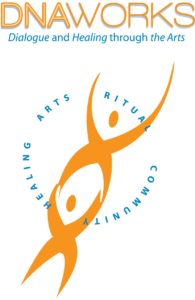
DNAWORKS Bio: DNAWORKS is a Fort Worth, TX-based arts and service organization dedicated to dialogue and healing through the arts. Founded in 2006 by Daniel Banks and Adam W. McKinney, DNAWORKS centers Global Majority and LGBTQQ2SPIAA+ voices to create more complex representations of identity, culture, class, and heritage through dance, theatre, film, and writing.
DNAWORKS has led its award-winning programming and performances, promoting dialogue-based social justice action and community building, with arts, educational, and community organizations in thirty-seven states and seventeen countries. DNAWORKS believes that art = ritual = healing = community and that this philosophy and practice lead to a more peaceful world.
Shelter in Place
Shelter in Place is an immersive environment created by Adam W. McKinney that deconstructs elements of the holiday of Sukkot to reflect on the anti-Black racial violence, historical trauma, and the possibilities of liberation through art and ritual. The work began with McKinney’s learning of the 1921 lynching of Mr. Fred Rouse, whose murder at the hands of a white mob in Fort Worth has largely been forgotten. With few historical archives to draw upon, the artist collaborated with Diné photographer Will Wilson to stage tintypes wherein McKinney dresses as Mr. Rouse in traumatic sites associated with the lynching.
These images become the locus of documenting injustices of the past and the means for initiating transformational civic change. The viewer witnesses McKinney dancing in a film manifesting the sukkah’s protection; he circles and spirals as a representation of Shechinah, the Biblical clouds of glory. In celebration of Sukkot, the artist inverts the sukkah, bringing the secrecy of historical truths to light; the images, film, text, and dance are on full display. A nod to the latticed roof of the sukkah, Shelter in Place gathers up a visual archive that feels less like finding shelter and more like yearning for it. McKinney’s multimedia exploration of the life of Mr. Rouse is a Black Jewish response to history that is re-embodied as a prayer for justice.
Shelter in Place was created in collaboration with
Dramaturgy: Daniel Banks
Dance Film Artist: Roma Flowers
Music: Najeeb Sabour
Tintype Photography: Will Wilson for Fort Worth Lynching Tour: Honoring the Memory of Mr. Fred Rouse
Concept, Choreography, and Dance Performance: Adam W. McKinney
2509 – Leah Gipson

Bio: Leah Gipson is an artist, scholar, and activist from Panama City, Florida who lives in Chicago, Illinois. She received her M.A. in Art Therapy from the School of the Art Institute of Chicago and her MTS at McCormick Theological Seminary. She studied art and design at the University of Central Florida, where she received her B.F.A. Leah is an Assistant Professor at the School of the Art Institute of Chicago, and teaches at the Center for Religion and Psychotherapy Chicago. Her community art and clinical practice in art therapy and counseling address racial and gender-based trauma, and grief and loss. As an artist-activist, Leah uses her practice to facilitate dialogue through community projects that engage Black culture, art and religion.
She asked her mother…
Leah Gipson is an interdisciplinary artist who works with ordinary material expressions of Black culture to imagine critical “call and response” environments. Her work explores race and gender through family history, popular media, and public archives using image, sound, textile and installation. Rooted in mixed traditions of Black feminism and Black church, Gipson’s artist-activist practice asks how communities cultivate conditions for care that are responsive to Black life. Gipson has collaborated with artists and community participants to augment public spaces in Chicago—a vacant lot, a barbershop, a church rectory, the “L”, a neighborhood school — to provoke conversations about how Black communities collectively negotiate power, survival, and resistance. In 2021, Gipson began a collaboration with Scheherazade Tillet and Robert Narciso to build The Black Girlhood Altar, a temporary monument to missing and murdered Black girls. During the first week of the project, a 16-year-old girl named Ma’Khia Bryant was murdered by police in Columbus, Ohio. The Black Girlhood Altar honors and remembers Ma’Khia Bryant, Rekia Boyd, “Hope”, Breonna Taylor, Marcie Gerald, Latasha Harlins, Lyniah Bell, Sandra Bland, and other Black girls and young women whose lives and experiences of racial and gender injustice call for accountability and social change. The assembly and installation of the altar at multiple sites creates collective spiritual spaces for protest and mourning, while celebrating the lives of Black girls who help us to remember. As Black children and adult allies encounter intensifying racism through censorship in public education, Gipson invites Black girls in Houston to collaborate on the first installation of The Black Girlhood Altar in the South as part of larger conversations on critical monuments, place-making and activism.
2507- David-Jeremiah
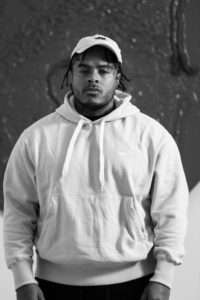
Bio: David- Jeremiah is a self-taught multi-disciplinary artist from Oak Cliff, Dallas. He examines the violent past and present that Black bodies have endured, particularly within America. His conceptual artworks are made from a mix of paintings, inverted performance installations, sculpture, and mixed media. Jeremiah’s work heralds an urgency to address systemic racism and the institutions that upholds it. It also extends beyond those grounds to consider more significant questions about the human condition and identity through his investigations into what he describes as ritualistic violence.
A Watermelon’s History In Niggas
It seems like a lot of anti-critical race theory folks steady pull the lazy tactic of leveraging the “ideal”. Essentially the same play utilized by the: “No…All Lives Matter” retort to the Black Lives Matter assertion. Traveling into the future, capturing and weaponizing the ideal, only to bring it back to the present and dead everything.
Competition is nature. And how much we debase it has turned into one of many endless competitions within itself. When someone brings up a generalization during a conversation within a specific moment of context that communicates precisely what the solution needs, the homie on the other end points out an exception. And of course vice versa. Some conversations have so much energy built up from being had for so long that they’re past us, and can be had themselves. But, proven by how we repeatedly stay in the way, we’re not past them. Before my granny would beat that ass for doing something I wasn’t supposed to for the 3rd or 4th time she would always say: “If you like it, I love it.” Competition.
I wanted to compete with the unrealities, realities, and overall cap of the nuance-free proclamation that the Black condition in America is solely its own fault. Why not create a world where niggas play the role
of the white man, and inside a nigga’s stomach, the internalized white system has been stolen from whites and incorporated to oppress Watermelons? Why not do what you do to me better to Watermelons? Why not be you better than you? Because if you like it, I very much so love it.
2505 – University of Houston Downtown Critical Race Studies Center and The Houston Young Lawyers Association (HYLA) and Kindred Spirits Design Co.

UHD CRC Bio: The Center for Critical Race Studies (CCRS) at the University of Houston-Downtown produces knowledge to transform lives, empower communities, and work towards social justice. The Center serves students, the institution, and the community through teaching, research, the facilitation of public discourse, and the cultivation of social empowerment. It joins interdisciplinary study, practice, and activism to explore how different forms of racism contribute to and maintain cultural, social, and institutional power structures that make an impact on the lived experiences of marginalized peoples. Housed in the College of Humanities and Social Sciences (CHSS), UHD’s CCRS prepares students to become vital participants in Houston’s social and economic future and the global community at large.

HYLA Bio: The Houston Young Lawyers Association (“HYLA”) is a dynamic young professionals’ organization and specialty bar association. Their membership is diverse and consists of attorneys who are 36 years old and under, or in their first five years of practice, as well as law students.
Since its inception in 1937 as the Houston Junior Bar Association, HYLA has a rich tradition of community involvement and leadership in the Houston legal community. They are proud to have celebrated more than 75 years of service to the community and the profession.
Kindred Spirits Design Co. Bio: Giovanna Pineda, also known as Kindred Spirits, is a Mexican-American graphic designer based in Houston. Before studying graphic design in 2018 at Shillington in New York, Pineda studied Cognitive Neuroscience at University of Pennsylvania and worked in experience design and operations at a charter school in Brooklyn.
After working at an agency in Manhattan, Pineda came back home to Houston and started Kindred Spirits Design Co. To transition towards work on branding projects for small businesses and entrepreneurs.
Education House
In late 2020, Critical Race Theory (CRT) was flung into the American limelight faster than the sudden popularity of kale chips and cauliflower rice. But, unlike our diet-obsessed culture’s affinity for the latest
super foods, CRT’s claim to fame was much more dubious: it was a sitting-duck-politician’s final attempt to ignite a culture war and, perhaps, his most successful, as evidenced by the waves of state legislation deriving from his initial attempt to ban CRT and diversity trainings at the federal level. So, how does an obscure and scholarly theoretical framework become the talk of the townhall? And what’s a “theory” anyway?
Academic theories are, simply put, ways of thinking about certain phenomena in the real world. The goal of academic theories is to increase understanding or to help ‘make sense of’ certain ideas, patterns, circumstances, and the like. Theories help scholars answer the complicated ‘how’ and ‘why’ questions of the world. These perspectives are often abstract, meaning they evolve over time through arguments and rationale based on observations and analyses of one or more scholars. In other words, theories are not considered to be definite truths or established facts but are still generally widely accepted as useful for explaining how the world works. In the curious case of Critical Race Theory, one might suggest that the theory aims to offer one perspective of how and why racism continues to persist in American society.
In the Education House of Round 53, Houston attorneys from the Houston Young Lawyers Association join scholars and students from the University of Houston-Downtown’s Center for Critical Race Studies to explore the evolution of CRT from its legal studies beginnings to its present-day status as a legal obsession. With visual aids provided by Kindred Spirits Design Co., the house will highlight the major premises of the academic theory alongside key passages of current legislation in the Texas Senate, which aims to ban CRT in publicly funded schools for good. Visitors to the house will be met with thought-provoking illustrations, questions, and answers that aim to quell curiosity about CRT’s past, present, and purpose, and will walk away better equipped to engage with the remaining art houses in Round 53.
Community Gallery Artist – Mich Stevenson
Bio: Mich Stevenson makes structures, enlarged ornaments, signs, and vessels as profound reflections for everyday existence. The works identify, inquire and broaden with sensations of daily encounters: driving on streets and highways, viewing billboard communications, interactions with nature, and wayfinding symbols as directions to navigate one’s way through life.
Stevenson’s work explores everyday human activity, spiritual awakening, and the built environment. He works as a seeker relaying self-discovery and found objects as tools for transformation where complex histories pave the path to unlimited futures void of debilitating bias.
Resuming Round 51 | Mich Stevenson: Graves into Gardens
Mich Stevenson’s Round 51: Local Impact II installation “Home Safe” was a conversation on debilitating bias resulting in the unjust loss of Black life in America. Mich created an environment for his installation which showed a path to an unrestricted future; one where Black life could escape the pains of injustice stemming from police brutality, racism and the COVID-19 reality.
Continuing Round 51’s conversation, Stevenson presents Graves into Gardens, with a piece titled Yellowjacket No.3 (previously exhibited in the 2021 Texas Biennial) and the debut of Gethsemane. Yellowjacket No.3 is a direct reference to the deadly sting of supremacy as it takes the shape of a klansmen’s hood. Juxtaposed triumphantly, is Gethsemane. Here the convex security mirrors are removed as a tool for surveillance and repurposed as planters for olive trees. In the biblical tradition, the olive filled “Garden of Gethsemane” is the place where Jesus Christ surrendered his will to God turning over His life so that death could have no sting; so that the grave could one day become an eternal garden.

